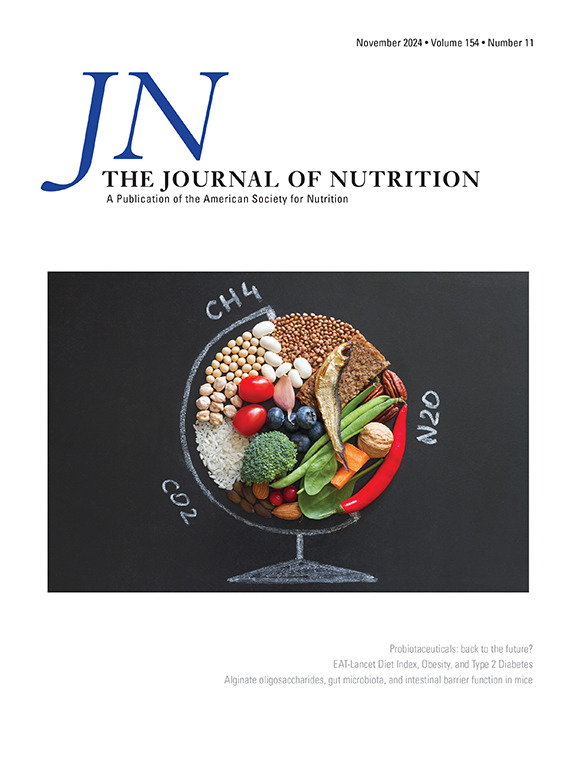Dietary Calcium Intake in Relation to New-Onset Hypertension Among Chinese Adults: A Comparative Prospective Cohort Study Across Two Distinct Climate Zones Based on the CHNS
IF 3.8
3区 医学
Q2 NUTRITION & DIETETICS
引用次数: 0
Abstract
Background
Hypertension is a leading global health concern, with diet being a key modifiable risk factor. Although calcium intake influences blood pressure regulation, evidence remains inconclusive. Emerging findings suggest that climate-related factors may modulate calcium metabolism and hypertension risk.
Objectives
This study examined the association between dietary calcium intake and new-onset hypertension using data from 8591 adults without hypertension at baseline in the China Health and Nutrition Survey (1997–2011), with stratified analyses by key demographic factors and climate type.
Methods
Demographic characteristics were assessed using chi-square tests and general linear models. Multivariate Cox regression models evaluated the association between dietary calcium intake quintiles and hypertension risk. Restricted cubic spline models were used to analyze dose–response relationships.
Results
A J-shaped relationship (nonlinear P < 0.05) was observed between calcium intake and new-onset hypertension, with the lowest risk at 550.588–646.353 mg/d (hazard ratio: 0.827; 95% confidence interval: 0.734, 0.933; P = 0.002). Age-stratified analyses showed distinct patterns: young adults (18–35 y) had lower risk at moderate intake but higher risks at extremes (nonlinear P < 0.001), whereas elderly (≥65 y) demonstrated increasing risk with higher intake (nonlinear P = 0.042). And climate-specific trends emerged: low calcium intake inversely correlated with hypertension in temperate monsoon regions, whereas high intake showed positive associations in subtropical monsoon climates.
Conclusions
This study revealed a J-shaped association between dietary calcium intake and hypertension risk among Chinese adults, with climate- and age-related heterogeneity, underscoring the importance of precision nutrition in public health guidelines.
膳食钙摄入与中国成年人新发高血压的关系:基于CHNS的两种不同气候带的比较前瞻性队列研究
目的:本研究利用中国健康与营养调查(1997-2011)中8,591名基线无高血压的成年人的数据,对膳食钙摄入量与新发高血压之间的关系进行了研究,并根据关键人口因素和气候类型进行了分层分析。方法:采用卡方检验和一般线性模型评估人口统计学特征。多变量Cox回归模型评估膳食钙摄入五分位数与高血压风险之间的关系。限制三次样条模型用于分析剂量-反应关系。结果:钙摄入量与新发高血压呈“j”型关系(非线性p < 0.05),风险最低为550.588 ~ 646.353 mg/d (HR: 0.827;95% ci: 0.734-0.933;P = 0.002)。年龄分层分析显示了不同的模式:年轻人(18-35岁)在中等摄入量时风险较低,但在极端摄入量时风险较高(非线性p < 0.001),而老年人(≥65岁)则随着摄入量的增加风险增加(非线性p = 0.042)。气候特异性趋势出现:温带季风地区低钙摄入与高血压呈负相关,而亚热带季风气候地区高钙摄入与高血压呈正相关。结论:本研究揭示了中国成年人膳食钙摄入量与高血压风险之间存在j型相关性,且存在气候和年龄相关的异质性,强调了精准营养在公共卫生指南中的重要性。
本文章由计算机程序翻译,如有差异,请以英文原文为准。
求助全文
约1分钟内获得全文
求助全文
来源期刊

Journal of Nutrition
医学-营养学
CiteScore
7.60
自引率
4.80%
发文量
260
审稿时长
39 days
期刊介绍:
The Journal of Nutrition (JN/J Nutr) publishes peer-reviewed original research papers covering all aspects of experimental nutrition in humans and other animal species; special articles such as reviews and biographies of prominent nutrition scientists; and issues, opinions, and commentaries on controversial issues in nutrition. Supplements are frequently published to provide extended discussion of topics of special interest.
 求助内容:
求助内容: 应助结果提醒方式:
应助结果提醒方式:


